Tanzania Weather: What to Expect
Tanzania’s climate varies by region, making it a year-round destination. Along the coast, including Zanzibar, expect hot and humid tropical conditions. In contrast, the northern and highland areas are cooler thanks to their higher elevation. Daytime temperatures typically range from 22°C to 31°C, while at night they can drop to between 10°C and 22°C. Zanzibar, being close to the Equator, enjoys a consistently warm and tropical climate.
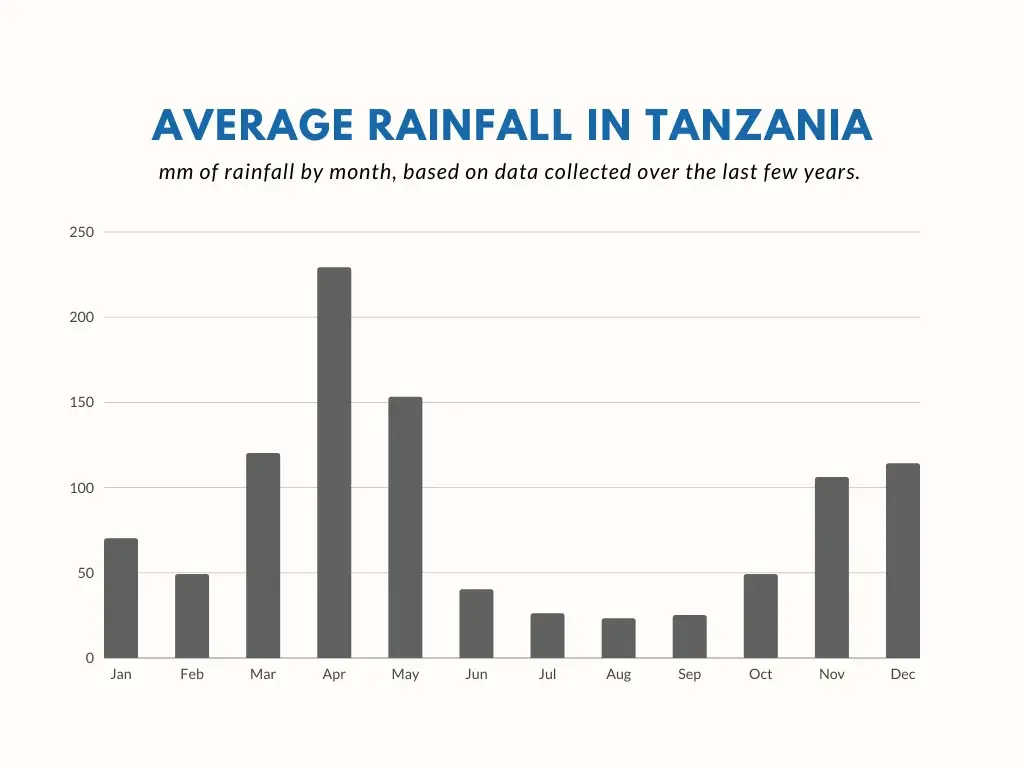
Seasons in Tanzania
Tanzania experiences two main seasons each year: the dry season and the wet season (also known as the rainy season).
- Short rains: Late October to December
- Long rains: Late March to early June
These tropical rains usually begin in the late afternoon and last through the night into early morning. The rainfall can be a magical sight—calming, refreshing, and a big part of the African wilderness experience.
The Dry Season
From June to October, Tanzania experiences its dry season, which also coincides with winter in the Southern Hemisphere. This is widely considered the best time to visit the country for wildlife safaris and outdoor adventures. During this period, rainfall is extremely rare, and the skies are typically clear and sunny.
✽ Why It's a Great Time to Visit
• Wildlife Viewing
As water becomes scarce, animals gather around rivers, lakes, and waterholes, making them easier to spot. The vegetation is also less dense, offering clearer views of the wildlife.
• Great Migration
This period includes the famous river crossings of the wildebeest migration in the Serengeti, particularly between July and August. It’s one of nature’s most dramatic spectacles.
• Ideal Trekking Weather
Cool mornings and clear skies create excellent conditions for hiking trips, such as a Mount Kilimanjaro climb.
Best Areas to Visit in the Dry Season
Tanzania offers a range of breathtaking destinations that truly shine during the dry season. The dry season in Tanzania offers the perfect blend of comfortable weather, incredible wildlife, and unforgettable scenery. Here are some of the top regions to consider:
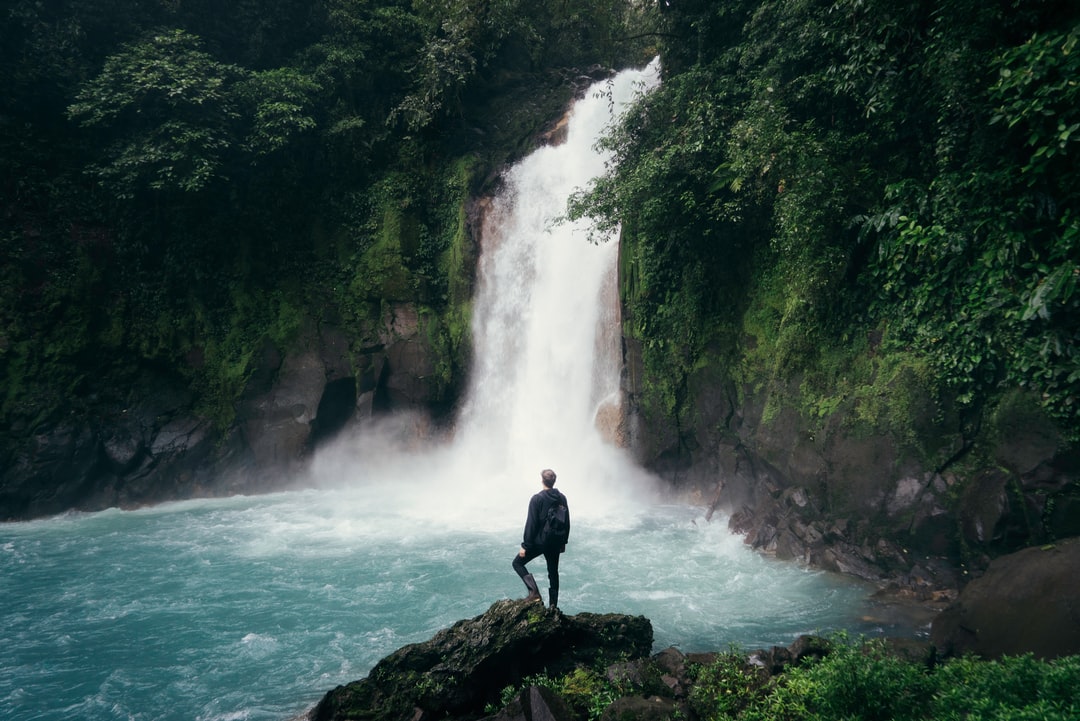
Zanzibar
Enjoy sun-filled beach days with calm seas, perfect for snorkeling and diving.

Northern Circuit Parks
(Serengeti, Ngorongoro, Tarangire, Lake Manyara) are in peak condition for safari.

Southern and Western Parks
Ruaha and Katavi offer remote, off-the-beaten-path safari experiences with abundant wildlife and fewer crowds.
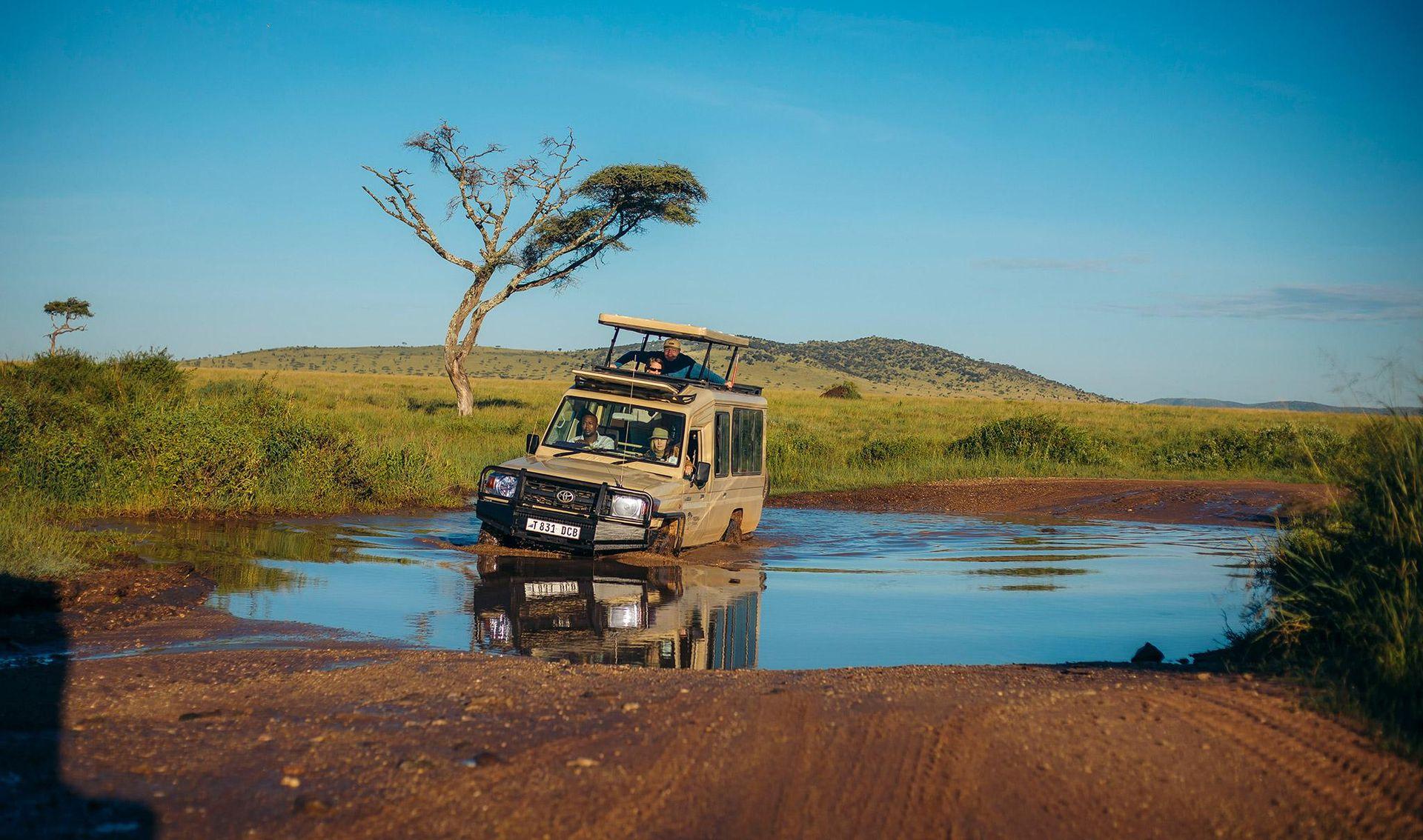
Can You Go on Safari During the Rainy Season?
Absolutely! In fact, many wildlife documentaries by National Geographic and Discovery Channel are filmed during Tanzania’s rainy season. The landscape bursts into color, the grass becomes lush and green, flowers bloom everywhere, and the wildlife thrives with plenty of food and water. On top of that, the cooler temperatures and fewer tourists make for a peaceful, intimate safari.
Another bonus? Lower prices for safaris and accommodations during this low season. However, do note that some lodges may close temporarily and certain roads—especially in southern parks—can become difficult to navigate due to mud.
Best Parks to Visit in the Rainy Season
If you're planning a trip during the wet months, these national parks are your best bet:
- Serengeti
- Ngorongoro Crater
- Tarangire
- Lake Manyara
- Lake Natron
- Arusha National Park

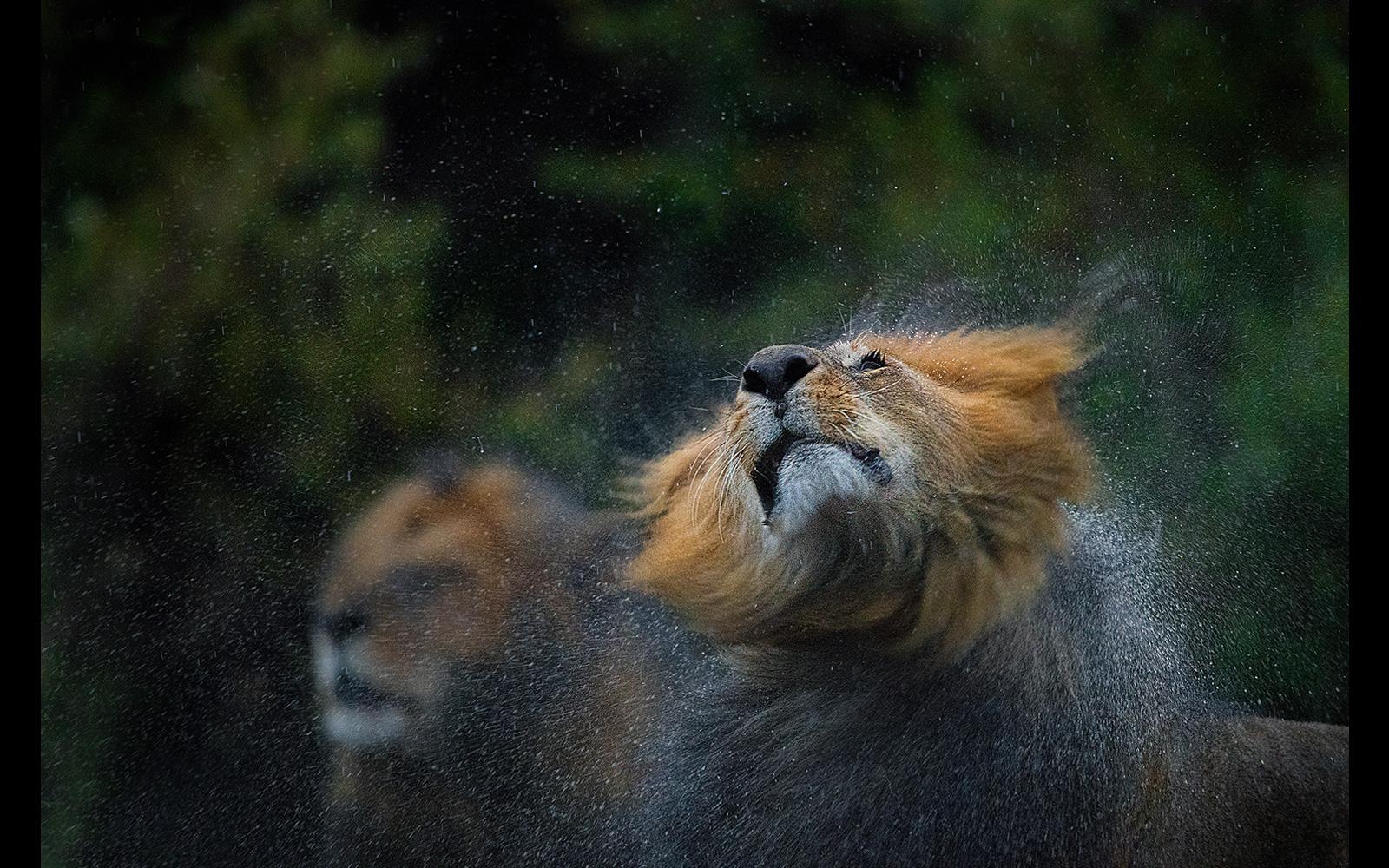
How Rainy Season Affects Wildlife
Rain transforms Tanzania into a lush paradise and brings an explosion of life. With water and food in abundance, animals are highly active and easier to spot. Many travelers even say the rainy season brings a more immersive and personal safari experience.
It’s also prime time for bird watchers, as migratory birds flock to the region in large numbers. And because the rain cools the land, animals are protected from the intense sun, keeping them more visible during the day.
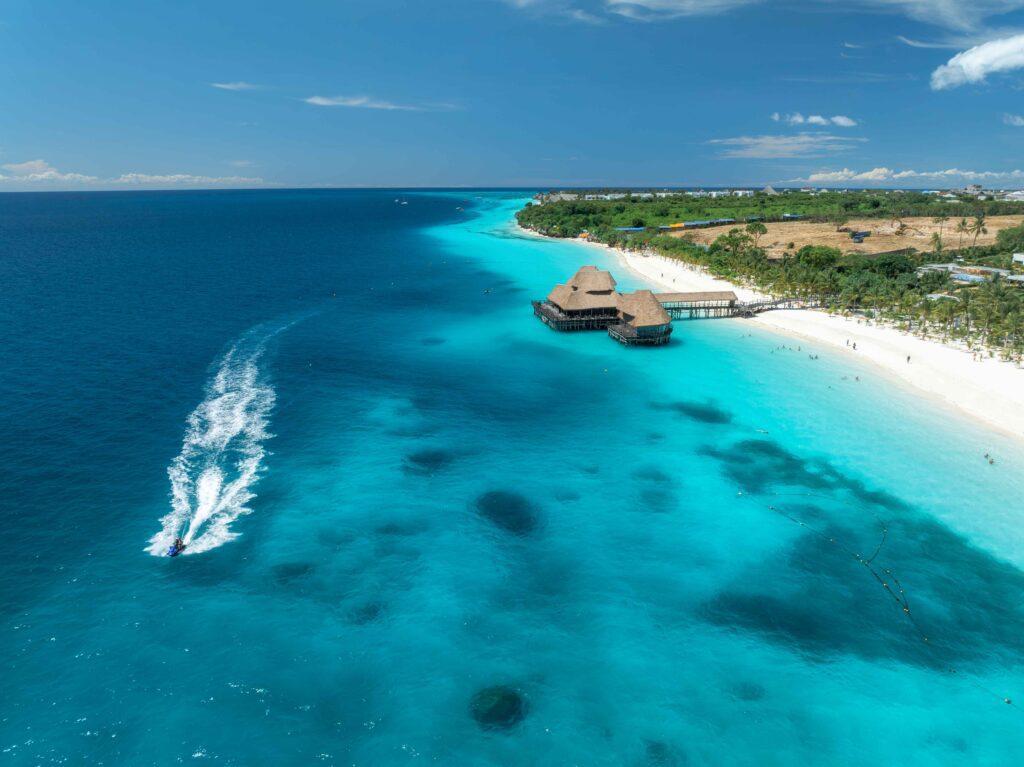
Whether you're chasing wildlife, dramatic landscapes, or tropical beaches, there’s always a perfect time to explore Tanzania. For detailed travel recommendations, check out our well Crafted Safaris.
